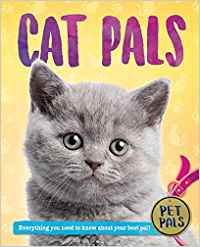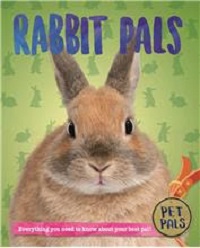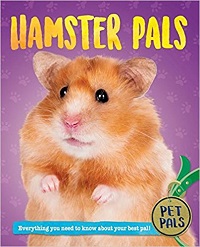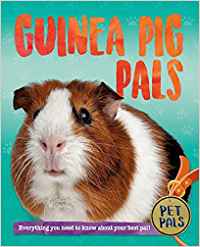| ________________
CM . . . . Volume XXIV Number . . . . November 10, 2017
excerpt:
Pets can play important roles in children’s lives. Their required daily care teaches children responsibility. Pets can become silent confidantes with whom children can share their innermost thoughts and feelings. And certainly pets are objects of a child’s love. And often, pets are children’s first experience with death. Having a pet can definitely be an enriching experience for a child. But then there is the flip side that occurs when a pet becomes a family burden, with the cause often being that, initially, pet ownership had been poorly thought through. The content of these five books in the “Pet Pals” series is intended to serve as pre-purchase/pre-adoption advice to those considering adding one or more dogs, cats, rabbits, hamsters or guinea pigs to their homes. The books’ highly illustrated contents consist of 12 two-page chapters, a 10 question quiz, a “Learning More” page which directs readers to related books and websites, and a closing page that is shared between an index and a glossary of words highlighted in the text. The three pages that are given over to the quiz and its answers could have been much more profitably utilized. The opening chapter, “Your [name of animal] From Head To Tail”, provides a large full-colour photo of the book’s focal pet. The important parts of the pet are labelled and described. In Cat Pals, prospective cat owners learn that cats’ eyes “have a layer in their eyes that reflects light, so they can’t hunt in near-darkness. This is why cats’ eyes glow at night.” The following chapter provides a general overview of the various breeds of each book’s pet and describes their “personalities”. In Pet Pals, eight of the most popular rabbit breeds are illustrated, and readers are told, for instance, that Flemish Giant rabbits are one of the largest breeds, and grow about as large as a medium dog. They are good-natured and get along with other pets, so they make great house pets.” On the other hand, Angora rabbits are covered in long hair, which means they need grooming every day. For this reason, they are not the best choice for a busy family.” The third chapter in each book in the “Pet Pals” series is probably the most important for those who are strongly considering acquiring a pet. “Choosing Your [name of animal]” provides information that needs to be taken into account when selecting a specific pet type. For example, author Jacobs says that choosing a guinea pig calls for deciding between a female or male, a breed with long or short hair, and whether the guinea pig will be an indoor or outdoor pet. In selecting a cat, Jacobs provides a decision tree: pedigree or mixed; kitten or adult cat; long-haired or short-haired, male or female; and indoor or outdoor cat. In one instance, Jacobs even takes into account time of day for selecting a pet, pointing out that “Hamsters are usually asleep during the day, but it’s important to see them moving about to check that they don’t have any health problems. If you can, it’s best to visit the pet store in the evening, when hamsters are most likely to be active.” Subsequent chapters provide practical advice on the housing, feeding, and daily care of the series’ animals as well as their safety and health issues. Tips on the typical behaviour of the five animals in the series will assist their owners in better responding to the animals’s needs. Understanding that rabbits typically dig and chew should alert new rabbit owners not to leave electrical cords accessible to their long-eared pets. And a seeming lifeless hamster might not really be dead. It may have simply gone into hibernation because you kept the area containing its cage too cold during winter. “Communication” is another useful chapter wherein pet owners are given guidance on how to “read” their pets’ sounds or movements. For example, a hamster with its ears up means it is curious, but, if it’s lying on its back with its teeth showing, it’s saying, “I’m frightened – leave me alone!” A rabbit flicking its ears wants to play, but one with it ears tilted far back is communicating anger and the desire not to be disturbed. Additional chapters offer tips on how to train each specific pet as well as suggestions on “Fun and Games” appropriate for each type of pet. Dogs like to play hide-and-seek, tug-of-war, chase and catch and pouncing games while cats prefer to chase things or climb and hide. Because rabbits are most active in the early morning and early evening, Jacobs suggests that is the best time to play with them, noting that “[w]hen your bunny gets to know you, it will come and tell you that it wants to play by circling round your feet or pulling at your clothes.” The series’ text is broken up into bite-sized boxes complemented by numerous full-colour, engaging photographs. Information-wise, all five books in the “Pet Pals” series are outstanding. Filled with practical advice and providing important knowledge, one or more of the books should be required reading by any child (and its parents) who are considering adding a four-legged member to their family. Highly Recommended. Dave Jenkinson, CM’s editor, who lives in Winnipeg, MB, with his wife and a 23-year-old cockatiel, the latter awaiting its book in the “Pet Pals” series.
Next Review |
Table of Contents for This Issue
- November 10, 2017. |




